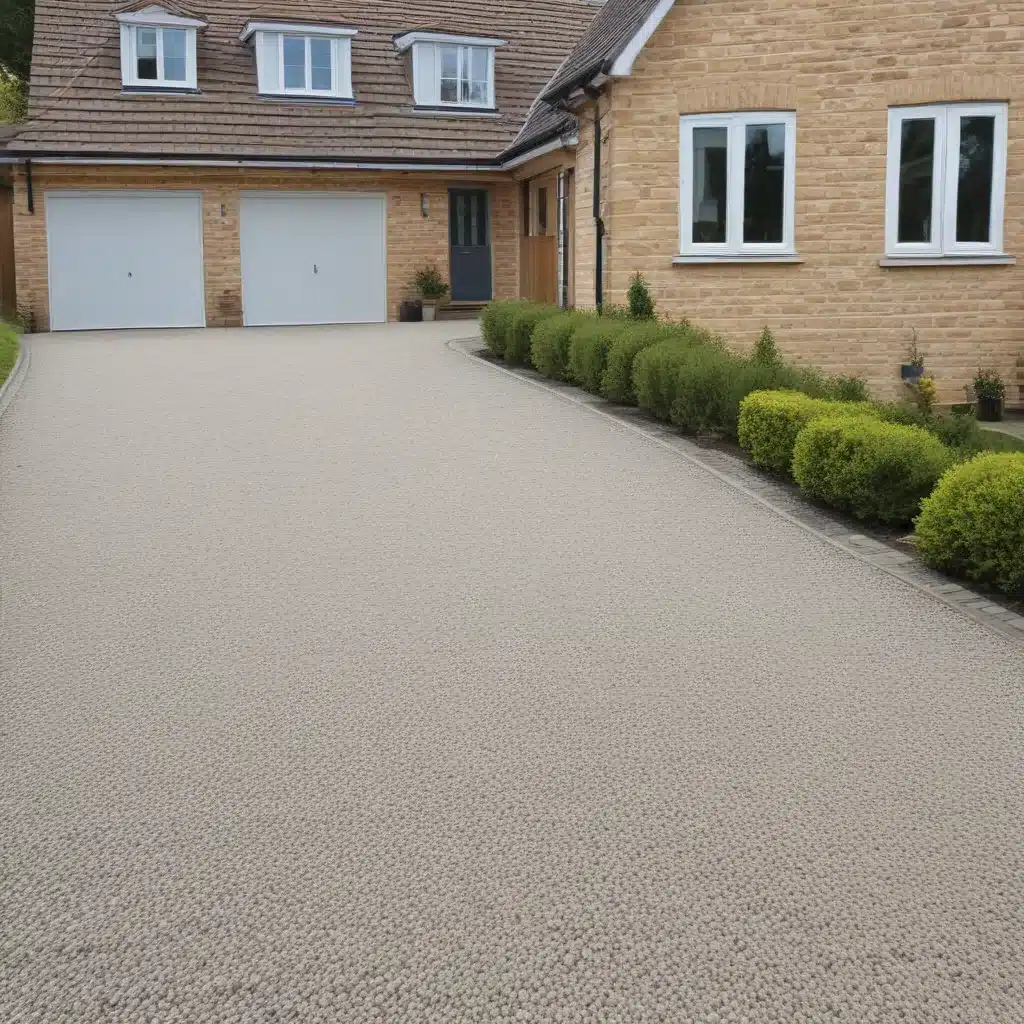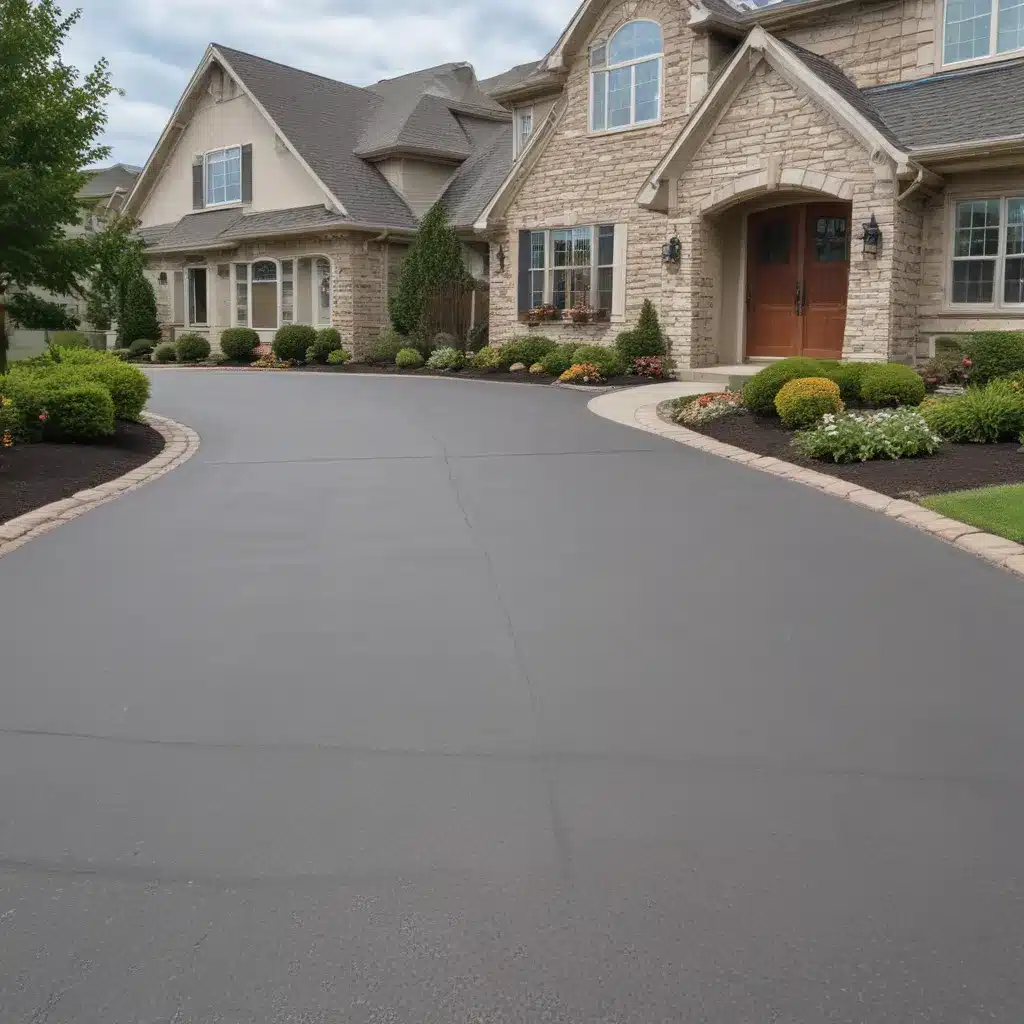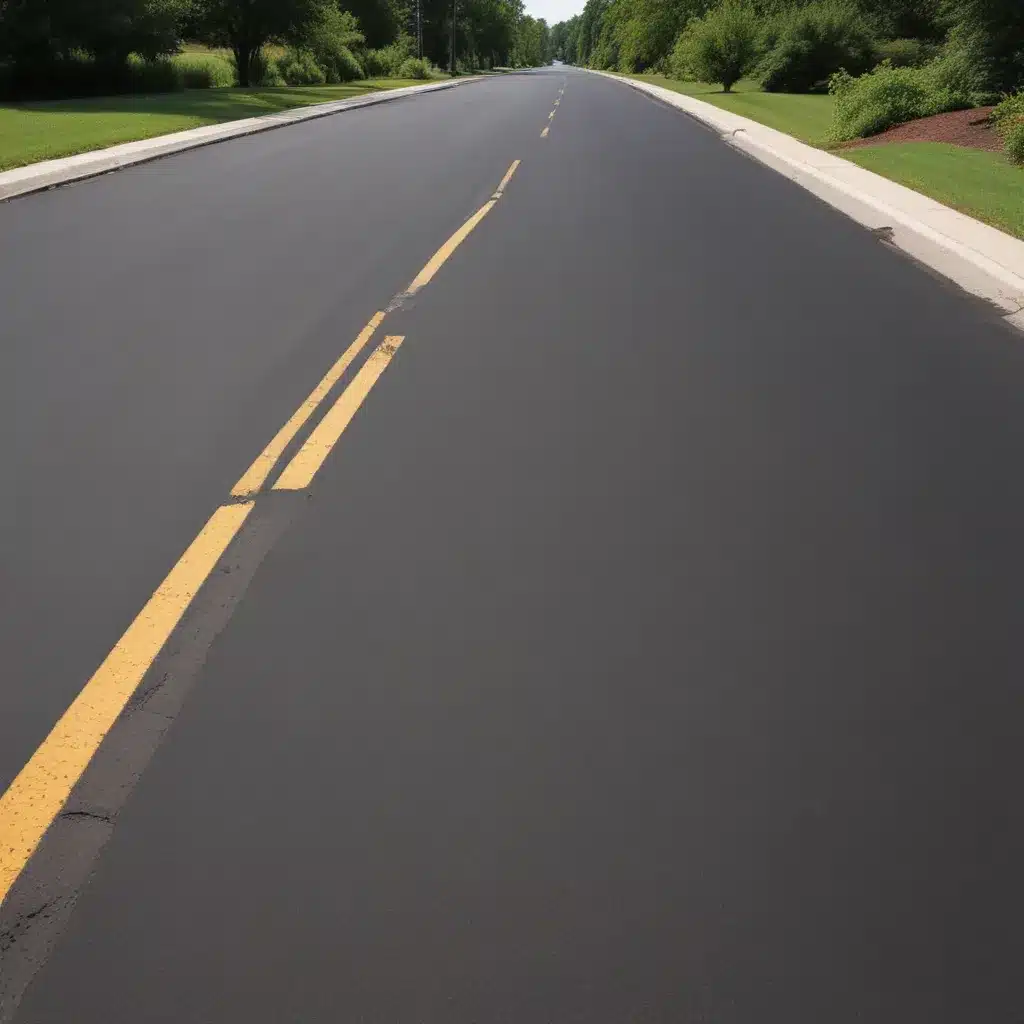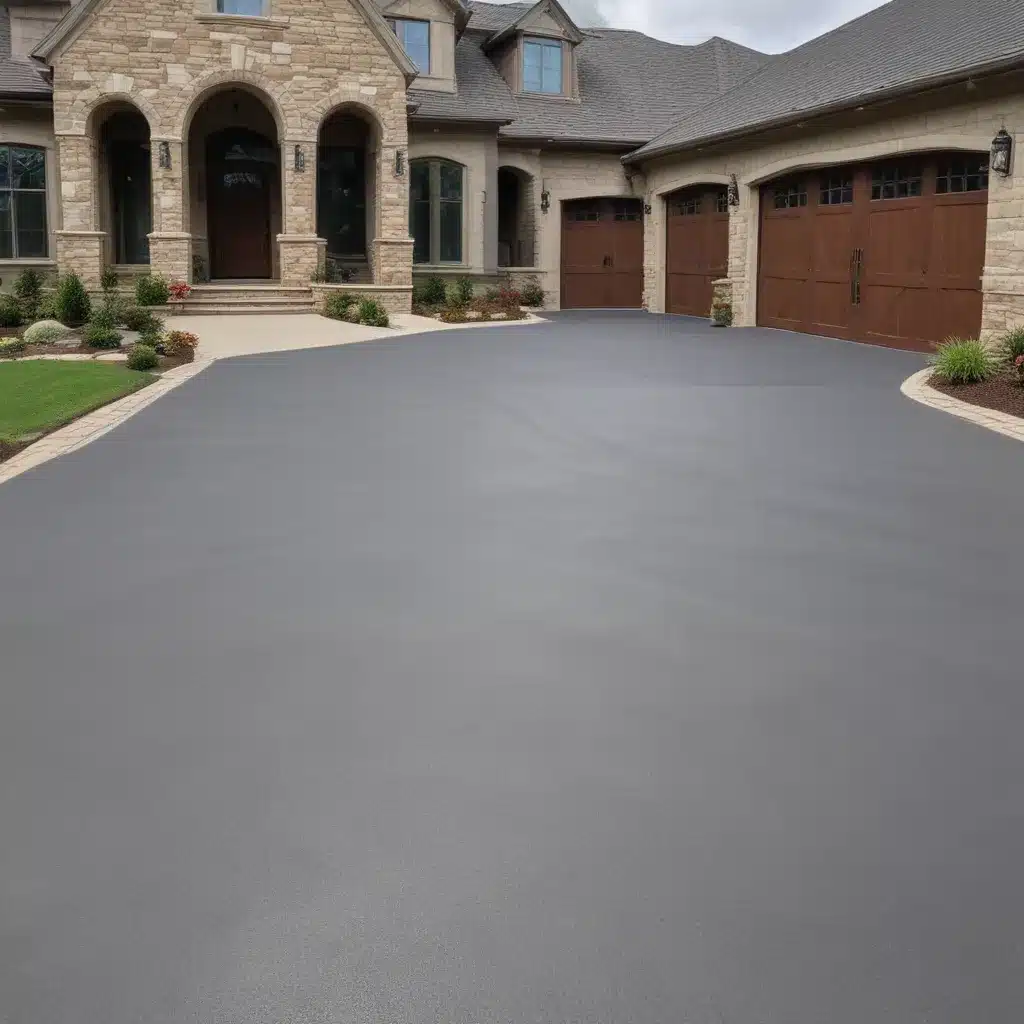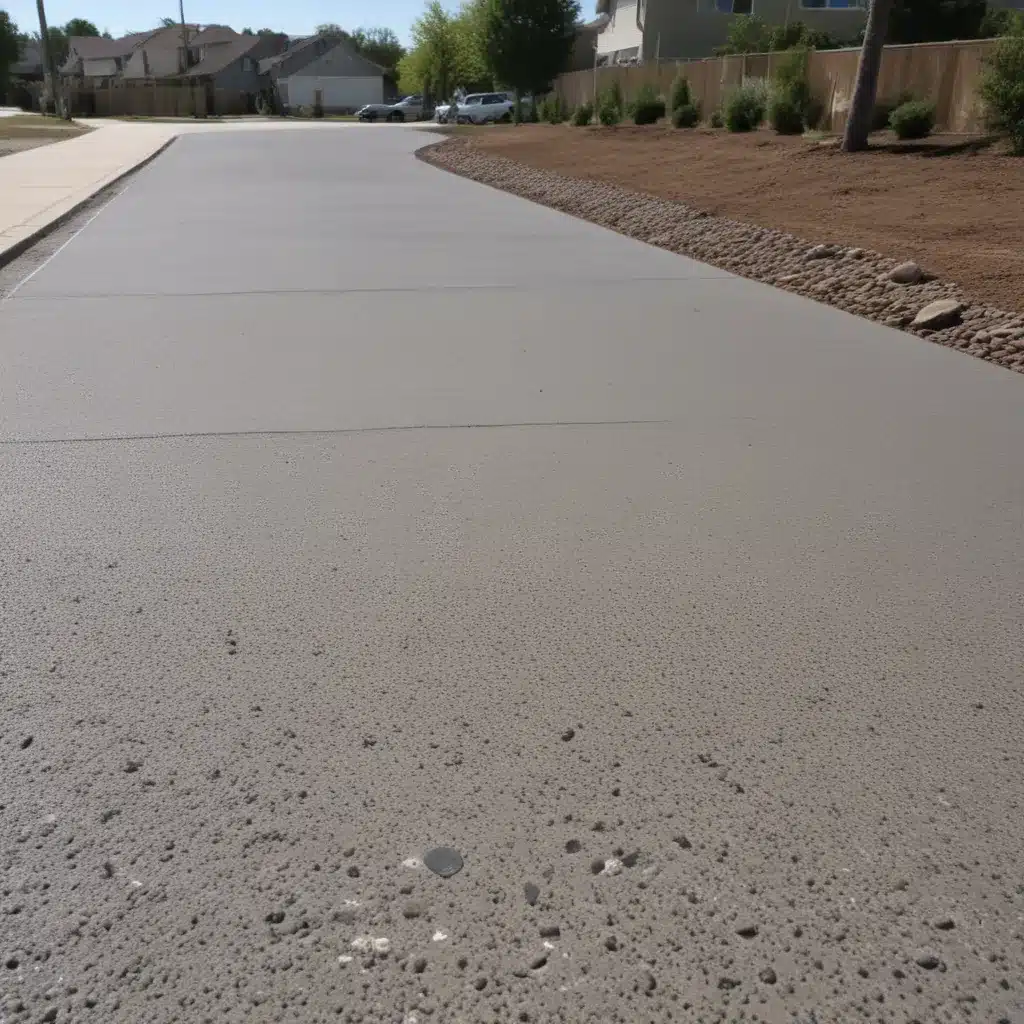The Foundation of a Driveway: Crucial Considerations
As I embark on the journey of revamping my driveway, I can’t help but feel a sense of excitement and trepidation. After all, the foundation of a driveway is the bedrock upon which the entire project rests. And when it comes to gravel driveways, the base truly sets the stage for a long-lasting, functional, and aesthetically pleasing result.
You see, I’ve always been a bit of a DIY enthusiast, and the idea of getting my hands dirty and crafting the perfect driveway is truly invigorating. But I also know that there’s more to it than just shoveling some gravel and calling it a day. Nope, there’s a whole science behind creating a sturdy, well-draining base that can withstand the test of time and the elements.
Laying the Groundwork: Assessing the Soil Conditions
The first step in choosing the best base for my gravel driveway is to assess the soil conditions on my property. After all, the soil that lies beneath the surface is the foundation upon which everything else will be built. And just like a house needs a solid footing, so too does a driveway.
I know that the composition of the soil can vary significantly from one location to another, and that’s why I’ll need to do a little bit of research. I’ll start by digging a few test holes in the area where I plan to install the driveway, and then I’ll analyze the soil to determine its texture, drainage capacity, and overall stability.
If the soil is predominantly clay-based, for example, I’ll need to take extra precautions to ensure that the base can handle the potential for swelling and shrinking. On the other hand, if the soil is more sandy or gravelly, I may be able to get away with a simpler base construction.
Laying the Groundwork: Preparing the Site
Once I’ve assessed the soil conditions, the next step will be to prepare the site for the driveway base. This will involve clearing away any existing vegetation, debris, or topsoil, and then grading the area to ensure that it slopes gently away from the house.
I know that proper drainage is essential for a successful gravel driveway, so I’ll need to pay close attention to the grading and make sure that any water runoff is directed away from the house and towards a suitable drainage system. This might involve installing French drains or other drainage solutions to keep the base from becoming waterlogged.
The Bedrock of a Gravel Driveway: Choosing the Base Material
With the site prepared, it’s time to start thinking about the actual base material that I’ll be using. And let me tell you, there are a lot of options to choose from! From crushed stone to geotextile fabric, each material has its own unique properties and benefits.
One of the most common base materials for gravel driveways is crushed stone, also known as crushed rock or crushed aggregate. This material is made by crushing larger rocks into smaller pieces, and it’s prized for its durability and stability. Crushed stone can come in a variety of sizes, from large, chunky pieces to fine gravel, and the size I choose will depend on the specific needs of my driveway.
Another popular option is geotextile fabric, which is a synthetic material that helps to prevent the soil from mixing with the gravel and causing the driveway to become unstable. Geotextile fabric is often used in conjunction with a layer of crushed stone, as it helps to create a strong, well-draining base.
The Importance of Proper Compaction
Regardless of the base material I choose, one thing is certain: proper compaction is absolutely essential for a successful gravel driveway. You see, if the base isn’t compacted properly, it can lead to all sorts of issues down the line, from uneven settling to potholes and rutting.
That’s why I’ll need to invest in a heavy-duty compaction tool, like a plate compactor or a roller, and take the time to thoroughly compact the base material before adding the gravel. I know it might be tempting to try to skip this step, but trust me, it’s worth the effort. A properly compacted base will provide a solid foundation that can withstand the weight of vehicles and the elements for years to come.
Maximizing Drainage: The Key to a Long-Lasting Driveway
Another crucial factor in choosing the best base for my gravel driveway is ensuring that the drainage is properly addressed. After all, standing water can quickly lead to all sorts of problems, from erosion to the dreaded “pothole syndrome.”
To combat this, I’ll need to make sure that the base is sloped in a way that encourages water runoff, and that any low-lying areas are filled in or reinforced with additional drainage solutions. This might involve installing French drains, swales, or even a more elaborate stormwater management system.
I know it might sound like a lot of work, but trust me, it’s worth it. A well-drained driveway will not only last longer, but it will also be easier to maintain and more enjoyable to use. Plus, who doesn’t love the satisfying sound of water rushing away from their driveway during a heavy rainstorm?
The “No-Dig” Alternative: Geogrid Reinforcement
As I’ve been researching the best base options for my gravel driveway, I’ve also come across a fascinating alternative that doesn’t involve traditional excavation and base installation: geogrid reinforcement.
Geogrid is a type of synthetic, mesh-like material that can be laid directly on top of the existing soil, without the need for any digging or soil removal. The grid-like structure of the geogrid helps to distribute the weight of vehicles evenly across the surface, while also providing superior drainage and stabilization.
One of the biggest benefits of using geogrid is that it can significantly reduce the amount of time and labor required to install a gravel driveway. And since there’s no need for excavation, it’s also a more eco-friendly option that generates less waste.
Of course, geogrid isn’t suitable for every situation, and it may not be the best choice if the soil conditions are particularly poor or if heavy vehicles will be using the driveway on a regular basis. But for the right property, it could be a game-changer that saves time, money, and effort.
The Beauty of Customization: Mixing and Matching Base Materials
As I’ve been exploring the different base options for my gravel driveway, I’ve realized that there’s no one-size-fits-all solution. In fact, the best approach might involve a combination of different materials, each serving a specific purpose.
For example, I might start with a layer of geotextile fabric to provide a stable, well-draining foundation, and then top it off with a few inches of crushed stone. Or I could use a combination of crushed stone and recycled concrete to create a base that’s both durable and eco-friendly.
The key is to think creatively and be willing to experiment. After all, every property is unique, and the perfect base for my driveway might not be the same as the one that works best for my neighbor’s. By mixing and matching different materials, I can create a custom solution that’s tailored to the specific needs of my property and my personal style preferences.
The Finishing Touch: Choosing the Right Gravel
Once I’ve got the base of my gravel driveway all sorted out, the next step will be to choose the right type of gravel to top it off. And let me tell you, there are a lot of options to choose from!
One of the most popular choices is pea gravel, which is a small, rounded type of stone that’s known for its smooth, uniform appearance. Pea gravel is a great option for driveways because it’s easy to maintain and provides good traction for vehicles.
Another popular choice is crushed stone, which is a bit more angular and textured than pea gravel. Crushed stone can come in a variety of sizes and colors, and it’s often used to create a more rugged, rustic look.
Ultimately, the type of gravel I choose will depend on my personal preferences and the overall aesthetic I’m going for. But no matter what, I know that the base I’ve laid will provide a solid foundation that can support the weight of the gravel and the vehicles that will be driving on it.
The Ongoing Maintenance: Keeping Your Gravel Driveway in Top Shape
Even with a well-designed and expertly installed gravel driveway, the work doesn’t stop there. Ongoing maintenance is essential if I want to keep my driveway looking its best and functioning at its peak.
One of the most important maintenance tasks will be regularly replenishing the gravel. Over time, the gravel can become compacted, displaced, or worn down, which can lead to ruts, potholes, and an uneven surface. By adding a fresh layer of gravel every few years, I can keep my driveway looking sharp and prevent any major issues from developing.
I’ll also need to keep an eye on the drainage system and make sure that it’s functioning properly. This might involve clearing out any debris that has accumulated in the French drains or swales, or even making adjustments to the grading if I notice any areas where water is starting to pool.
And let’s not forget about weed control! Pesky plants can quickly take over a gravel driveway if I’m not vigilant. I’ll need to stay on top of regular weeding, either by hand or with the help of a chemical weed killer, to keep my driveway looking neat and tidy.
The Final Verdict: Why a Gravel Driveway is the Way to Go
At the end of the day, I’m convinced that a gravel driveway is the way to go for my property. Not only is it a cost-effective and low-maintenance option, but it also offers a level of customization and versatility that I just can’t resist.
Plus, let’s be honest – there’s just something undeniably charming and rustic about the look and feel of a gravel driveway. It’s the perfect complement to a cozy country home or a modern farmhouse-inspired property, and it can add a touch of elegance and sophistication to any outdoor space.
Of course, I know that the key to a successful gravel driveway lies in the foundation, and that’s why I’m so committed to getting the base right. By taking the time to assess the soil conditions, prepare the site, and choose the right base materials, I can ensure that my driveway will stand the test of time and provide a smooth, functional, and aesthetically pleasing entrance to my home.
So, if you’re like me and you’re considering a gravel driveway for your own property, I encourage you to do your research, explore your options, and get ready to create a truly one-of-a-kind outdoor space that you can be proud of. It might take a bit of work, but trust me, the end result will be more than worth it.

